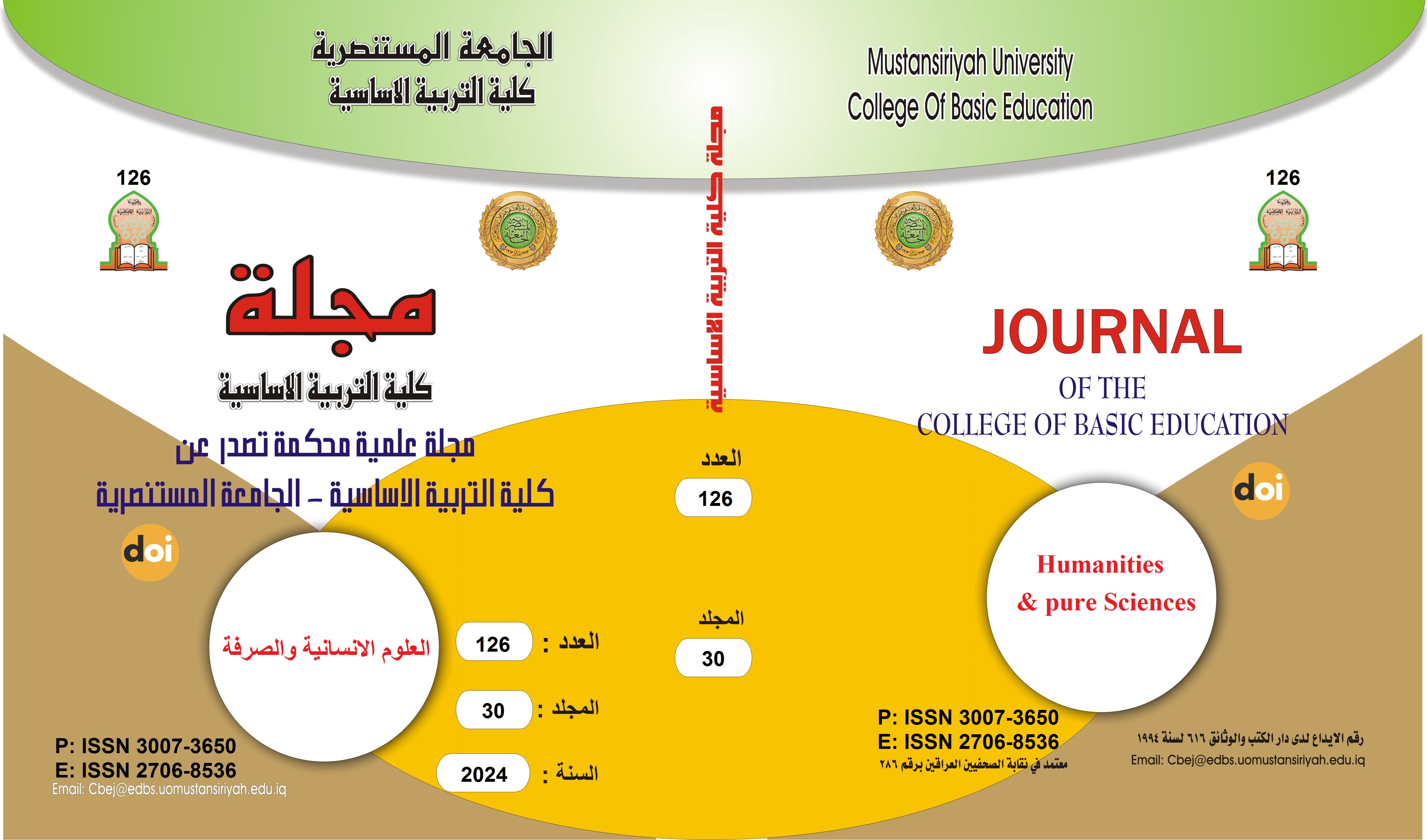The Reality of Teaching Art Education in Baghdad
Main Article Content
Abstract
Art education is a crucial subject for students at all educational levels, particularly during the early stages of their schooling from primary education onwards. It significantly contributes to shaping the child's personality from educational, psychological, social, and skill-based perspectives, in addition to fostering cultural, humanistic, and scientific aspects that develop further during secondary education (both middle and high school).The development of creative talents through practicing art in various fields, and emphasizing higher cognitive skills and critical thinking, enhances students' abilities in thought, taste, and skill. It creates a generation that is aware, possesses aesthetic sensibilities, and is cultured, thereby contributing to societal development and playing an influential role.
Therefore, the importance of the current research lies in its adherence to an educational vision in general, recognizing art education as a cultural and civilizational necessity that cultivates students' cultural, creative, and scientific thinking due to its connections with all other academic subjects and all aspects of life. Hence, it is essential to focus on this subject, monitor the reality of its teaching, and activate it. Through field visits, the researcher found significant difficulties and numerous problems hindering the activation of this subject. These issues and the importance of revealing the current state of art education teaching led to this field study to examine the extent of difficulties facing the teaching of this subject, the alignment of its objectives with the current educational process in Iraq, among other challenges, and the potential for activating and developing its teaching.
The research aimed to reveal the reality of teaching art education and the potential for activating its teaching in Baghdad.The research was limited to art education teachers in secondary schools (middle and high schools) in Baghdad's Karkh First and Rusafa First districts for the academic year (2022-2023).
The researcher adopted an open-ended questionnaire addressing art education teachers in secondary schools as the research tool. The open-ended questionnaire consisted of) 10( items, which were reviewed by a group of experts in art education, teaching methods, and linguistic experts to ensure the tool's validity and reliability.
Data was analyzed based on the teachers' (the research sample) responses to the open-ended questionnaire, focusing on the three main questions to achieve the research goal. The most significant difficulties for the first question totaled (14 difficulty), while the alignment of the curriculum's objectives and content with students' needs and the current educational process in Iraq for the second question was identified in (3 items). Teachers' suggestions to activate the teaching of the subject for the third question were identified in (6 items).
Frequencies were calculated using the Fisher equation, and the percentage weight was also derived to clarify the proportion of each item on the form, ranking them accordingly.The researcher concluded with several findings, including the necessity of having a specific curriculum for students, the need for an art room or gallery to display outstanding students' artwork, and ensuring that the art education class is not scheduled at the end of the school day.
In light of the results and their discussion, the researcher reached the following key conclusions:
- The absence of a specific curriculum negatively impacts the importance of the subject and its effective application, which negatively affects students' practical lives.
- Continuous updating of the curriculum is required to align with global developments and meet students' needs and the current educational process in Iraq.
Based on the results and conclusions, the researcher recommends the following:
- It is essential to print art education books for students at all levels due to their importance for both students and teachers, as they contain educational values and human rights principles that enrich students' educational and value-based ideas. Additionally, they cover various fields of art education, including drawing, design, Arabic calligraphy, decoration, theatrical arts, and musical arts.
To complement and further develop the current research, the researcher suggests conducting a study on (the reality of teaching art education at the primary education level).
Article Details

This work is licensed under a Creative Commons Attribution-ShareAlike 4.0 International License.
